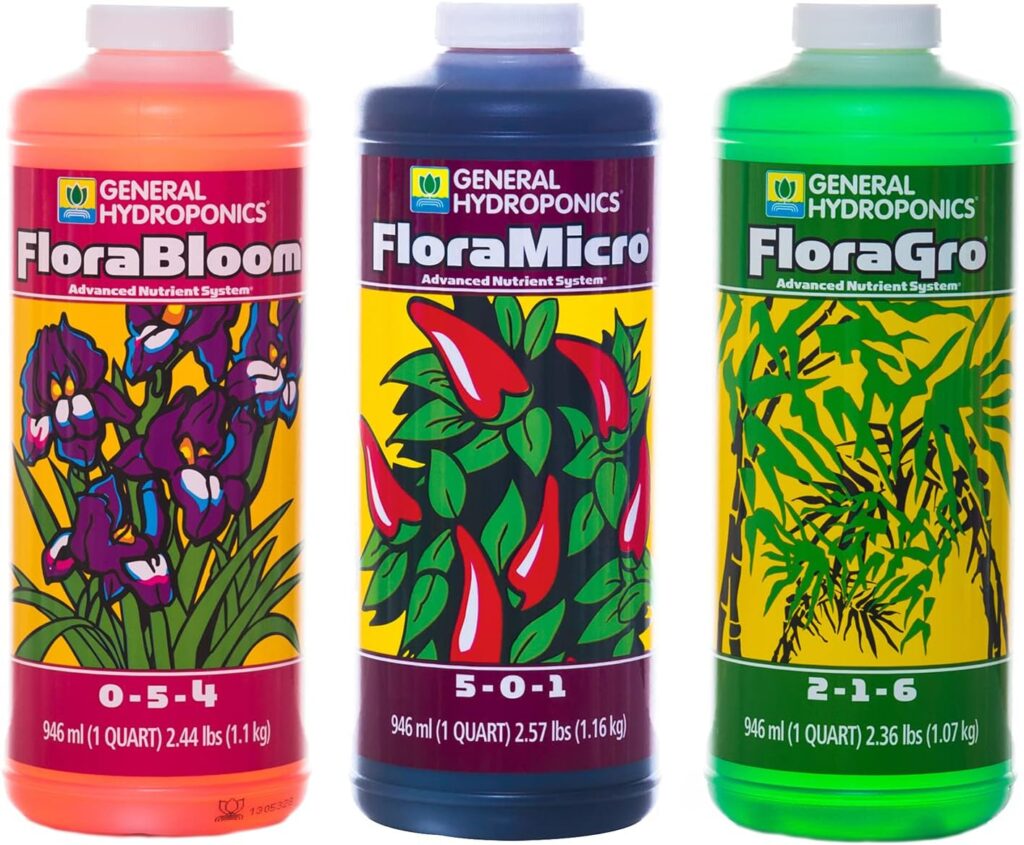In this article, you will discover the key steps to effectively take care of your aquaponic plants. Whether you are an experienced gardener or just starting out, understanding the needs and requirements of these unique plants is essential for their growth and flourishing. From maintaining proper water conditions to providing adequate nutrients, you will learn how to create a thriving environment that promotes healthy plant growth. Get ready to dive into the world of aquaponics and unlock the secrets to nurturing these fascinating plants.
Water Quality
Maintaining pH levels
One of the key aspects of caring for your aquaponic plants is maintaining the pH levels in your system. The ideal pH range for most aquaponic plants is between 6.0 and 7.0. To ensure that your plants receive the optimal pH levels, you can use pH testing kits to monitor the water’s acidity. If the pH levels are too high or too low, you can adjust them by adding products like pH up or pH down, which are specifically designed to raise or lower pH levels, respectively. Regularly monitoring and adjusting the pH levels will help create a favorable environment for your plants to thrive.
Monitoring ammonia levels
Ammonia is a byproduct of fish waste, and while it’s beneficial for plants as a nutrient source, high levels of ammonia can be toxic to both fish and plants. Therefore, it’s essential to monitor and maintain ammonia levels in your aquaponic system regularly. You can use ammonia test kits to measure the ammonia concentration in your water. If ammonia levels exceed the recommended safe range, it’s crucial to take immediate action. One way to control ammonia levels is by adding more plants to your system. Aquaponic plants have the ability to consume ammonia and convert it into beneficial nitrates, which can be utilized by the plants as nutrients.
Controlling nitrate levels
While nitrate is an important nutrient for plants, excessively high nitrate levels can also be harmful to fish and plants. To maintain a healthy balance, it’s important to control nitrate levels in your aquaponic system. Regular testing using nitrate test kits can help you monitor the nitrate levels in your water. If the nitrate levels are too high, you can reduce them by implementing a few strategies. One effective method is to perform regular water changes, which can help dilute the nitrate concentration. Another approach is to grow plants that have a high nitrate uptake, such as lettuce or basil. By controlling nitrate levels, you can ensure the overall health and productivity of your aquaponic plants.
Nutrients and Supplements
Providing essential nutrients
In an aquaponic system, fish waste provides a significant portion of the nutrients that your plants need to grow. However, depending solely on fish waste may not always be sufficient to meet all the nutritional requirements of your plants. It’s essential to regularly test the nutrient levels in your water and supplement accordingly. Adding essential nutrients such as potassium, phosphorus, and calcium can help ensure that your aquaponic plants have all the necessary elements for healthy growth. You can find specialized aquaponic nutrient solutions that are designed to provide a balanced blend of essential nutrients for your plants.
Using organic supplements
When it comes to choosing supplements for your aquaponic plants, opting for organic options is highly recommended. Organic supplements are derived from natural sources and contain fewer synthetic chemicals, ensuring the well-being of both your plants and the ecosystem. Organic supplements such as seaweed extracts and fish emulsion can be beneficial for promoting plant growth, improving soil fertility, and overall plant health. These supplements are usually easy to apply and can be diluted in water before being added to your aquaponic system. By choosing organic supplements, you can maintain a sustainable and eco-friendly approach to caring for your aquaponic plants.
Avoiding chemical fertilizers
While chemical fertilizers are commonly used in traditional gardening methods, they are not recommended for use in aquaponics. Chemical fertilizers can disrupt the delicate balance of the system, harm the fish, and cause harmful algae blooms. Additionally, the excess minerals and salts in chemical fertilizers can accumulate in the water and lead to nutrient imbalances. It’s best to avoid using chemical fertilizers altogether and rely on the natural nutrients provided by the fish waste and organic supplements. By avoiding chemical fertilizers, you can maintain a healthy and sustainable aquaponic system while minimizing the risk of water contamination.
Lighting and Temperature
Choosing adequate lighting
Light is an essential factor for the growth and development of your aquaponic plants. When choosing lighting for your system, it’s important to consider the light requirements of the specific plant species you’re growing. Natural sunlight can be a great source of light for your aquaponic plants, but it’s not always readily available or consistent. In such cases, artificial lighting options like fluorescent or LED lights can be used to supplement or replace natural light. It’s recommended to provide your plants with 12-16 hours of light per day for optimal growth. Positioning the lights properly and ensuring they cover the entire plant canopy will help promote even growth and prevent leggy or weak plants.
Adjusting light duration
The duration of light exposure can significantly impact the growth and productivity of your aquaponic plants. Depending on the plant species, some may require longer periods of light, while others may require less. It’s important to research the specific requirements of the plants you’re growing and adjust the light duration accordingly. Certain plants, such as leafy greens, may benefit from extended exposure to light, while others, like herbs or fruiting plants, may need shorter light periods. By closely monitoring and adjusting the light duration, you can optimize the growth and yield of your aquaponic plants.
Maintaining ideal temperature
Temperature plays a crucial role in the overall health and growth of your aquaponic plants. Most aquaponic plants thrive in temperatures ranging from 65°F to 85°F (18°C to 29°C). It’s important to ensure that the water temperature stays within this range. Fluctuations or extremes in temperature can stress the plants and hinder their growth. To maintain ideal temperature conditions, you can utilize heaters or chillers to regulate the water temperature. Additionally, shading your system during hot summer days or using insulating materials during colder months can help stabilize the temperature. Maintaining a consistent and suitable temperature will provide your aquaponic plants with the optimal conditions for healthy development.
Plant Selection
Choosing suitable plant species
When it comes to selecting plants for your aquaponic system, it’s crucial to choose species that are well-suited for the aquaponic environment. Some plants thrive in the nutrient-rich and constantly hydrated conditions provided by aquaponics, while others may struggle or become susceptible to diseases. Leafy greens such as lettuce, spinach, and kale are popular choices for aquaponic systems due to their high nutrient requirements and ability to grow quickly. Herbs like basil, mint, and parsley also do well in these systems. Fruit-bearing plants such as tomatoes, cucumbers, and peppers can be grown in larger setups. It’s important to research the specific requirements and characteristics of each plant species to ensure successful growth in your aquaponic system.
Considering growth rates
Different plant species have varying growth rates, and it’s important to consider this factor when planning your aquaponic garden. Some plants, like lettuce, have relatively short growth cycles and can be harvested within weeks. Others, like fruiting plants, may take several months to reach maturity. By choosing a mix of fast-growing and slower-growing plants, you can ensure a continuous harvest and maintain a balanced ecosystem within your aquaponic system. It’s also important to consider the space available for each plant and their potential height when fully grown to avoid overcrowding and competition for resources.
Understanding plant requirements
Each plant has its unique requirements for light, temperature, water, and nutrients. It’s important to understand and cater to these specific requirements to ensure the successful growth of your aquaponic plants. Some plants may prefer slightly acidic or alkaline pH levels, while others may thrive in neutral conditions. Researching each plant species and understanding their nutrient needs can help you provide the right balance of essential elements. Additionally, some plants may have particular humidity or airflow requirements, which can be adjusted using fans or venting systems. By tailoring the conditions to meet the specific needs of your plants, you can optimize their growth and overall health within your aquaponic system.
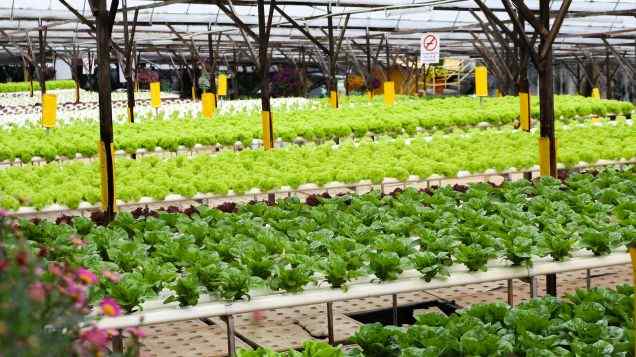
Pruning and Training
Managing plant size and shape
Pruning and training your aquaponic plants is essential for maintaining their size and shape, as well as promoting healthy growth. Regular pruning involves removing excess or unwanted branches, leaves, or stems. This allows the plant to focus its energy on new growth and prevents overcrowding, which can lead to disease or poor airflow. Training involves gently guiding the plant’s growth by using methods such as tying or staking. This helps ensure proper plant structure and prevents them from sprawling or leaning excessively. By regularly managing the size and shape of your plants, you can optimize their growth potential and promote overall plant health.
Promoting air circulation
Proper air circulation is crucial for preventing the growth of harmful fungi, bacteria, and pests, as well as facilitating the exchange of gases between plants and the surrounding environment. Overcrowding or dense foliage can hinder air circulation within your aquaponic system. By strategically pruning your plants and removing any unnecessary growth, you can create ample space for airflow. Additionally, using fans or ventilation systems can help improve air circulation within your aquaponic setup. Adequate airflow will reduce the risk of diseases and maintain a healthy environment for your plants to thrive.
Removing dead or damaged parts
Removing dead or damaged parts of your aquaponic plants is essential for promoting overall plant health and preventing the spread of diseases. Dead or decaying leaves or stems can harbor pathogens that can negatively affect the rest of the plant. Regularly inspecting your plants and promptly removing any signs of damage or decay will help maintain their vitality. Proper pruning techniques should be used to ensure clean cuts and minimize the risk of further damage. By removing dead or damaged parts, you can prevent the spread of diseases and promote the growth of new, healthy plant tissue.
Disease and Pest Control
Identifying common diseases
Like any other form of gardening, aquaponic systems can be susceptible to various diseases. Identifying common diseases early on is crucial for implementing appropriate preventive measures. Some common diseases that can affect aquaponic plants include powdery mildew, root rot, and leaf blight. By regularly inspecting your plants for symptoms such as discolored leaves, mold, or unusual growth patterns, you can quickly identify potential disease issues. Prompt action, such as removing affected plant parts or implementing targeted treatments, can help prevent the spread of diseases and maintain the overall health of your aquaponic system.
Implementing preventive measures
Prevention is always better than cure, and this principle holds true for maintaining the health of your aquaponic plants. Implementing preventive measures can significantly reduce the risk of diseases and keep your plants thriving. Some effective preventive measures include keeping the water clean and well-aerated, maintaining proper pH and nutrient levels, and ensuring proper spacing between plants. Regularly inspecting your plants for any signs of diseases or pests and promptly removing any affected parts can also help prevent the spread of pathogens. By implementing preventive measures, you can minimize the risk of diseases and ensure the long-term success of your aquaponic garden.
Natural pest control methods
Pest control is an important aspect of caring for your aquaponic plants, as pests can cause significant damage if left unchecked. Instead of relying on chemical pesticides, it’s best to opt for natural pest control methods. One effective method is introducing beneficial insects, such as ladybugs or lacewings, that prey on pests like aphids or whiteflies. You can also use physical barriers or traps to deter pests from reaching your plants. Additionally, maintaining a healthy and balanced ecosystem within your aquaponic system, with proper nutrient levels and plant care, can help prevent pest infestations. By utilizing natural pest control methods, you can protect your plants while minimizing the impact on the environment.
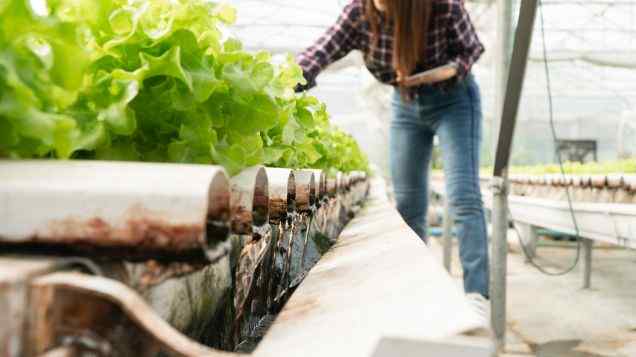
Harvesting and Crop Rotation
Knowing when to harvest
Knowing the right time to harvest your aquaponic plants is crucial to maximize yield and taste. Each plant species has its specific signs that indicate it’s ready for harvest. Leafy greens are typically ready to be harvested when they reach the desired size, while fruiting plants may require additional time for the fruits to ripen fully. Harvesting herbs can be done at any time, depending on personal preference or immediate culinary needs. It’s important to regularly inspect your plants and monitor their growth to determine the optimal time for harvest. By harvesting at the right time, you can enjoy the fruits of your labor and encourage continuous growth within your aquaponic system.
Rotating crops to prevent diseases
Crop rotation is a valuable practice in aquaponics as it helps prevent the buildup of diseases and pests. Rotating your crops involves changing the location of different plant species within your aquaponic system in each growing season. By doing so, you disrupt the lifecycle of pests and diseases that may have established themselves on certain plants. Additionally, rotating crops helps balance nutrient uptake and reduces the risk of nutrient deficiencies or excesses in specific areas of your system. By implementing crop rotation, you can maintain the health of your plants and ensure the long-term success and sustainability of your aquaponic garden.
Maximizing yield with proper techniques
To maximize the yield of your aquaponic plants, it’s important to employ proper techniques during the growth and harvesting process. One effective technique is ensuring that each plant has ample access to light and nutrients by appropriately spacing them. This prevents competition for resources and ensures optimal growth. Additionally, pruning and training your plants as mentioned earlier can promote healthy growth patterns and increase the overall yield. Regularly monitoring and adjusting the nutrient levels in your system can also contribute to maximizing plant productivity. By employing these techniques, you can achieve bountiful harvests and enjoy the full potential of your aquaponic garden.
Watering and Feeding
Maintaining proper moisture levels
Water is the lifeblood of your aquaponic system, and maintaining proper moisture levels is vital for the health and growth of your plants. Underwatering can cause stress and hinder growth, while overwatering can lead to root rot or waterlogged roots. It’s important to monitor the moisture levels by regularly checking the topsoil or using moisture meters. Striking a balance where the soil is moist but not saturated is key. Automated irrigation systems can be used to regulate water delivery and ensure consistent moisture levels. By maintaining proper moisture levels, you provide your aquaponic plants with the necessary hydration for healthy development.
Avoiding over and under watering
Finding the right balance between overwatering and underwatering is essential for the success of your aquaponic plants. Overwatering can lead to oxygen deprivation in the roots and create ideal conditions for root rot and other diseases. Underwatering, on the other hand, can cause stress and hinder plant growth. It’s crucial to pay attention to the specific needs of each plant species and adjust your watering routine accordingly. Regularly monitoring the moisture levels of the soil and responding to the plant’s cues can help you strike the right balance. Remember that factors such as temperature, humidity, and plant size can influence watering requirements. By avoiding over and under watering, you can ensure optimal plant health and growth.
Feeding plants with fish waste
Aquaponics is a closed-loop system where the fish waste provides the primary source of nutrients for the plants. The waste produced by the fish is rich in nitrogen, phosphorus, and other essential elements that plants need for growth. This waste is converted by beneficial bacteria into forms that can be easily absorbed by the plants. Feeding your aquaponic plants with fish waste eliminates the need for additional fertilizers. To ensure proper nutrient distribution, it’s important to have sufficient fish stocking density. Adequate fish activity and feeding will generate enough waste to sustain the nutrient requirements of the plants. By utilizing fish waste as a natural fertilizer, you can achieve healthy and vibrant aquaponic plants.
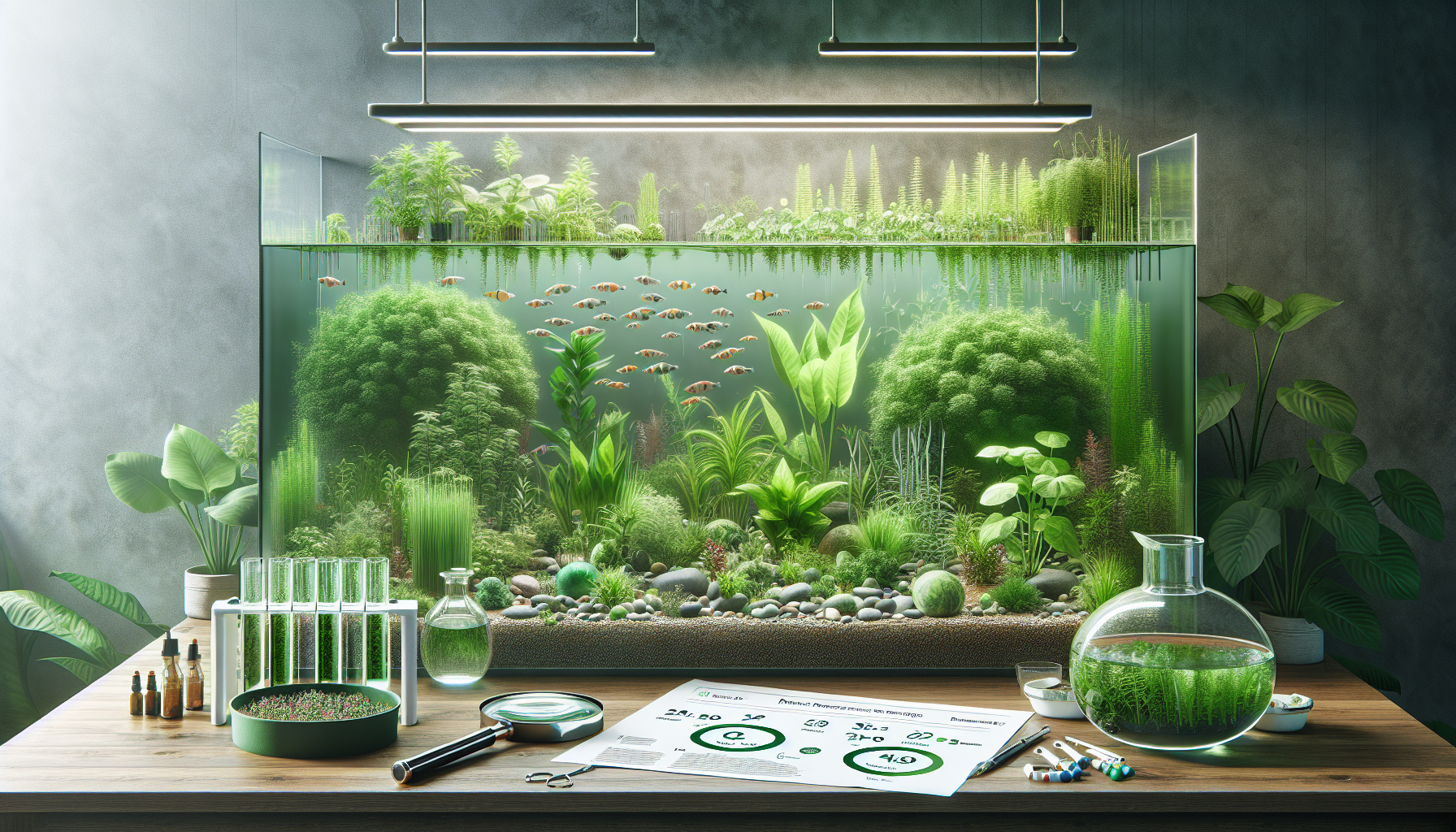
Principles of Aquaponics
Understanding the nitrogen cycle
The nitrogen cycle is a fundamental principle in aquaponics and is necessary for creating a symbiotic relationship between the fish, plants, and bacteria. It starts with the fish excreting ammonia as waste, which is then converted into nitrites by nitrifying bacteria. Nitrites are toxic to fish but are further transformed into nitrates by another group of bacteria. Nitrates, which are less harmful to fish, are taken up by plants as essential nutrients. The plants effectively remove nitrates from the water, maintaining the water quality for the fish. Understanding the nitrogen cycle and the interdependence of the various organisms involved is crucial for maintaining a healthy and balanced aquaponic system.
The role of bacteria in nutrient cycling
Beneficial bacteria play a crucial role in nutrient cycling within an aquaponic system. These bacteria convert fish waste, specifically ammonia and nitrites, into a form that can be readily utilized by plants. Ammonia is broken down by nitrifying bacteria into nitrites, which are then converted into nitrates by another group of bacteria. These nitrates are then taken up by the plants as essential nutrients, closing the loop of the nutrient cycle. Maintaining a healthy population of beneficial bacteria is essential for the overall well-being of your aquaponic system. Proper filtration, aeration, and avoiding the use of antibiotics or chemicals that harm bacteria are essential for ensuring the continued function of the nutrient cycling process.
Maintaining symbiotic balance
Aquaponics relies on maintaining a delicate balance between the fish, plants, and bacteria within the system. Each organism plays a vital role in the functioning and health of the overall system. The fish provide nutrients for the plants through their waste, while the plants filter the water and maintain its quality for the fish. The beneficial bacteria convert fish waste into forms that can be efficiently utilized by the plants. Disruptions or imbalances in any of these components can have detrimental effects on the system. It’s important to regularly monitor water parameters, test nutrient levels, and promote a healthy environment for all organisms. By maintaining a symbiotic balance, you can ensure the long-term success and productivity of your aquaponic garden.
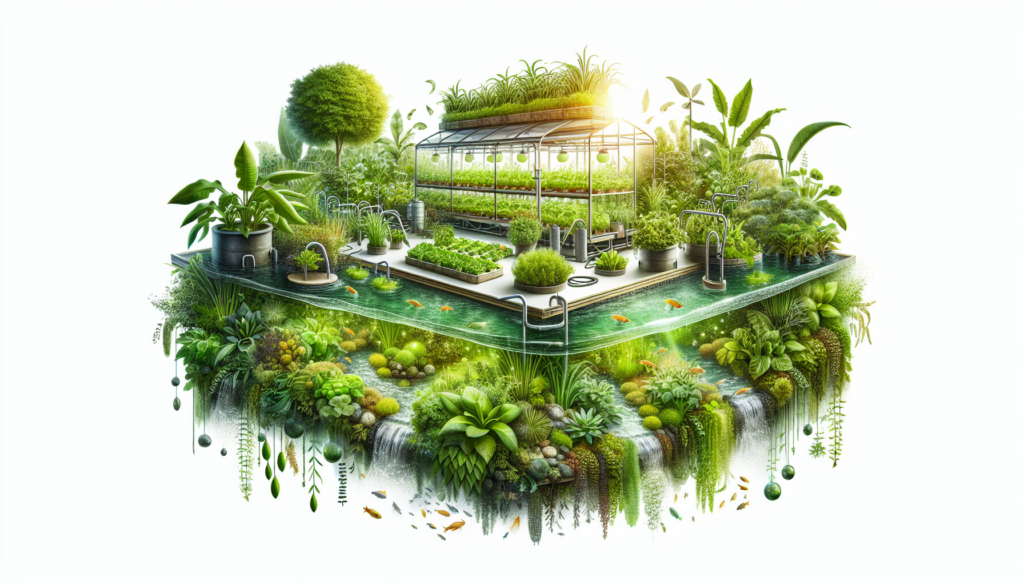
Maintaining Fish Health
Choosing compatible fish species
Ensuring the health and well-being of your fish is crucial for the success of your aquaponic system. When selecting fish species, it’s important to consider their compatibility with the system and their ability to thrive in the available conditions. Fish species that are commonly used in aquaponics include tilapia, trout, and catfish, among others. It’s important to research the specific requirements of each species, including temperature, pH, and water quality. Additionally, considering the growth rate and size of the fish is crucial to avoid overcrowding and ensure sufficient nutrient generation for the plants. By choosing compatible fish species, you can provide them with an environment that supports optimal health and growth.
Monitoring water temperature and oxygen levels
Maintaining appropriate water temperature and oxygen levels is essential for the health and survival of your fish. Fish are sensitive to temperature variations and require stable conditions to thrive. Regularly monitoring and adjusting the water temperature within the appropriate range for your chosen fish species is crucial. Additionally, ensuring adequate dissolved oxygen levels in the water is vital for the well-being of the fish. Proper aeration, through methods such as using air stones or water splashing, helps introduce oxygen into the water. Monitoring and maintaining suitable temperature and oxygen levels will contribute to the overall health and vitality of your fish.
Feeding fish a balanced diet
Providing your fish with a balanced and nutritious diet is essential for their growth and overall health. Fish require a diet that fulfills their specific nutritional requirements. Commercial fish feeds specifically formulated for the species you’re raising are readily available and offer a convenient option. It’s important to feed your fish an appropriate amount of food and avoid overfeeding, which can cause water quality issues. Regularly monitoring the feeding habits and behavior of your fish can help ensure they are receiving the proper amount of food. By providing a balanced diet, you can support the growth and vitality of your fish within your aquaponic system.
By following these comprehensive guidelines for taking care of your aquaponic plants, you can create an environment where both the fish and plants thrive. From maintaining water quality to choosing suitable plants and implementing proper techniques, your aquaponic garden can be a sustainable and rewarding venture. With patience, observation, and a little bit of effort, you’ll be able to enjoy the abundance and freshness of homegrown produce in your aquaponic system. Happy gardening!

